#acatl
Text
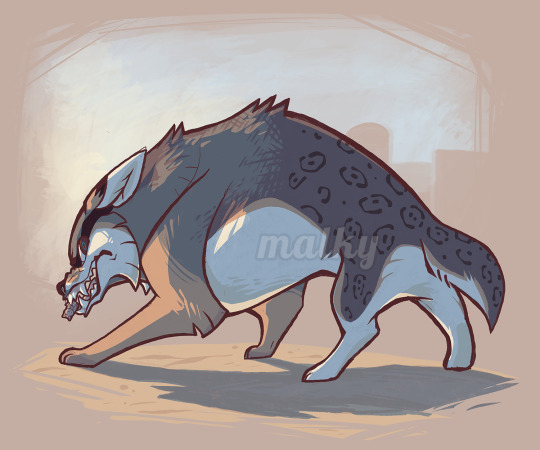

Gonna keep the oc train rollin'
This is Acatl. He's a nahual, an edgelord and very gay man for a djinn. He can only transform into this weird wolf/coyote/jaguar concoction I call the wolfyote.
309 notes
·
View notes
Photo
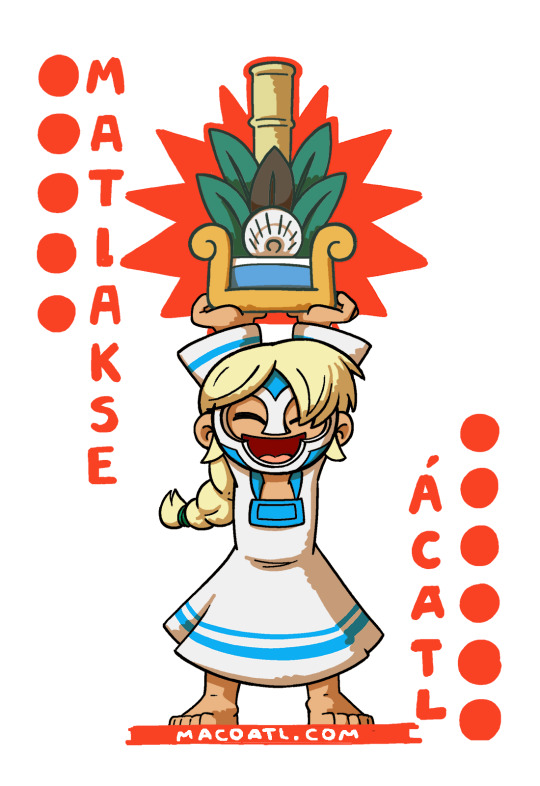
11 ÁCATL
The next mexica year has begun.
---
Empieza el siguiente año mexica
#Año nuevo azteca#11 Ácatl#Acatl#caña#bejuco#carrizo#Aztec new year#Mexica new year#Año nuevo mexica#11#macoatl
10 notes
·
View notes
Conversation
Acatl: Before you embark on a journey of revenge, dig two graves.
Teomitl: What a stupid fucking quote. I’m killing way more than two people, idiot.
Nezahual: On a journey of revenge, dig n+1 graves. If your enemy leaves heading northbound at 60 km/s and y-
10 notes
·
View notes
Text

i've always liked to play with fire 🔥🗡️
#final fantasy xiv#final fantasy 14#ffxiv#ff14#final fantasy#gpose#au ra#xaela#miqo'te#seeker of the sun#oc#original character#oc: sayana#friend oc: acatl#sayacatl#my s/o's miqo and my au ra!!! :)#i love them so much WAHHHHH
29 notes
·
View notes
Text
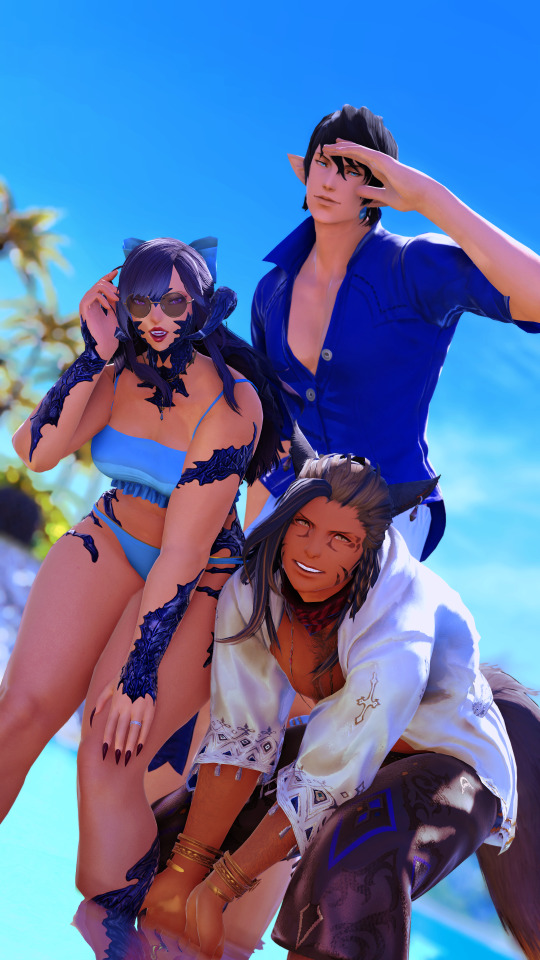
make the whole world bright and sunny 🍹☀️
#aria blogs ffxiv#gpose#ffxiv#final fantasy xiv#ff14#final fantasy 14#miqo'te#au ra#aymeric#aymeric de borel#friend oc: acatl#oc: sayana#saymericatl#MY OT3........I LOVE THEM SO MUCH
21 notes
·
View notes
Photo

Ruler Ce Acatl Topiltzin.
The last ascension is his NP, Tlahuizcalpantecuhtli: Burning Star of Sacrifice.
8 notes
·
View notes
Text
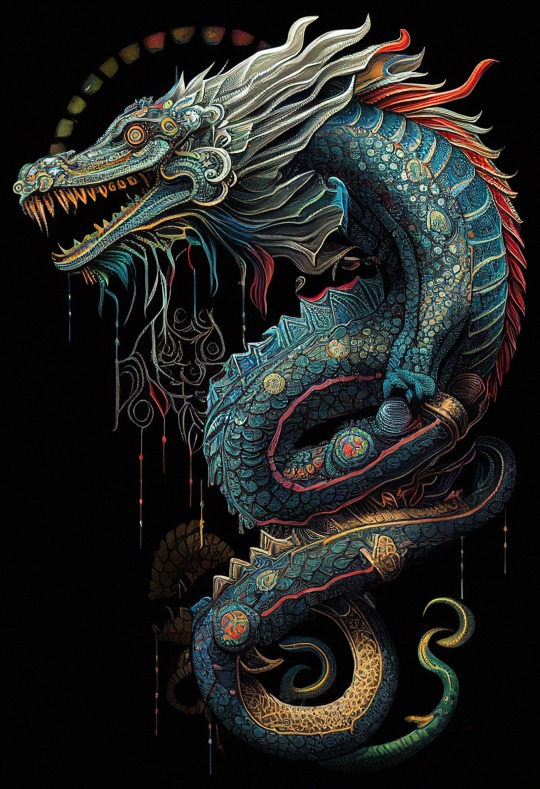
The significance of this day
Day Ehecatl (Wind, known as Ik in Maya) is governed by Quetzalcoatl as its provider of tonalli (Shadow Soul) life energy.
Quetzalcoatl 🐉
Talon Abraxas
The god Quetzalcoatl, is the Feathered Serpent or Precious Twin. He is the god intelligence and self-reflection, a patron of priests.
Quetzalcoatl is a primordial god of creation, a giver of life. With his opposite Tezcatlipoca he created the world. Quetzalcoatl is also called White Tezcatlipoca, to contrast him to the black Tezcatlipoca.
As the Lord of the East he is associated with the morning star, his twin brother Xolotl was the evening star (Venus). As the morning star he was known by the name Tlahuizcalpantecuhtli, "lord of the star of the dawn." An other representation of Quetzalcoatl is Ehecatl, the Wind God. His calendrical name is Ce Acatl (One Reed).
After the last world, the Fourth Sun had been destroyed, Quetzalcoatl went to Mictlan, the land of the death, and created our current world, the Fifth Sun, by using his own blood to give new life to bones. Quetzalcoatl is also the giver of maize (corn) to mankind.
72 notes
·
View notes
Text
CHAKOTAYS TRIBE !!!!!! PLEASE READ IF YOU WANT TO KNOW HIS TRIBE!!!! I'VE DONE RESEARCH TO TRY AND FIND THE ANSWER!! <3
What the hell even is Chakotays tribe??? Would it be a surprise that there is an answer to that? What tribe he was based on has been questioned for a while and I’ve only seen a few people come close to a proper answer. I’ve seen people say that he is of Navajo/Dine descent or Ojibwe. I wouldn’t say any of those are wrong as his “traditions” were all over the place it made it hard to tell. Our first bit of evidence is the location he and his father traveled to in the episode “Tattoo”. Now this is my least favorite episode in Voyager, almost as worst as TNG’s Code of honor lol. So, it’s always hard to watch and I haven’t done so in a while, but I do remember they said they traveled to Central America. Obviously, this makes up a few different countries and tribes, but the most predominant Nation in this area are the Maya. I’ve been doing tons of research on this matter, and its literally impossible to compare Chakotay’s tribe to an individual Maya tribe. This is where the writers used the “Hollywood Indian” stereotype because its just all over the place. Other than the location, a few things that gives it away is the name of his tribe. They call themselves the “Rubber Tree People”. If you are familiar with Mesoamerican history, you would know that this is what “Olmec” is roughly translated to. Linguists were able to translate it from the Nahuatl word “Olmecatl” meaning “the rubber people who live on this land”. The rubber tree also plays a significant role in Mesoamerican tribes. The rubber from the tree was used to make the ball for the sacred game of “ulama”. Which played an important role of in the creation story in the Popol Vuh about the Hero Twins. The Olmecs came before the Maya and Aztec, but a lot of Olmec culture influenced their own. Whether or not Chakotay’s tribe were direct descendants of the Olmecs is unknown to me. It wouldn’t make much since historically speaking, but it would fit the narrative of the episode “tattoo”. Another indication would be one of his decedents, Ce Acatl. Ce Acatl Topiltzin was a real person who was a ruler of the Toltecs. I’ve only read a lil bit bout him so I won’t speak on what he did or who he was until I’ve done more research. Finally, one of the other MAJOR indications to me was in his short background story of pathways. I am aware that these are not canon, but it gives a glimpse into what the creators had in mind while creating theses characters. The literal first page is his father recounting a story from the Popol Vuh, and he’s talking about the Hero Twins, Seven Macaw, and the Maize God. My mind was blown when I read that, cause I started research about this a few yeas ago and was using clues from the show and figured since I had read the book before and didn’t remember any significant information about his tribe, there wasn’t any point to open it up. I read the book again at the beginning of the year and lost my mind. All of my answers were there lol. But it confirmed what I already knew. I felt hella proud cause I took the long way to get an answer and was still right. Anyways there’s still sooooo much to say about this and I’m working on a well put together paper explaining why the customs and traditions they gave him were wrong or confusing. I hope people will read cause I put a lot of research into it. I also have what I think to be some good lore that could fix a little bit of the damage that was done. More on that later though 😊.
#captain chakotay#chakotay#commander chakotay#peepaw chakotay#star trek voyager#st voyager#star trek#stvoy#papa chakotay#ignore spelling mistakes lol#robert beltran
92 notes
·
View notes
Text
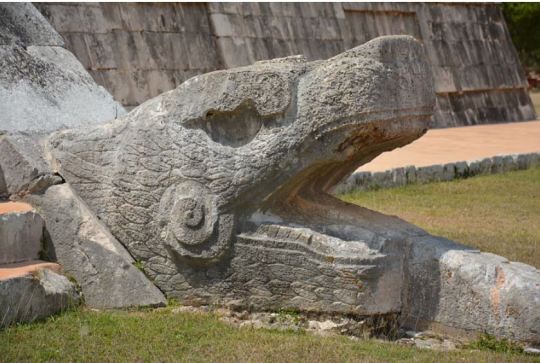
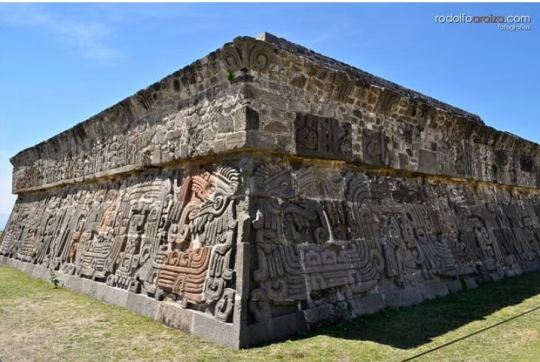

KUKULCAN (pron. Koo-kool-kan) is the name of a feathered serpent god in the mythology and religion of Mesoamerica, in particular, the Yucatec Maya. He is also identified as the feathered serpent god Quetzalcóatl by the Toltecs and Aztecs, as Gucumatz to the Quiché Maya of Guatemala, and Ehecatl, the wind god of the Huastecs of the Gulf Coast.
Kukulcan and his other manifestations are all unified by the belief that each was considered a creator god and a bringer of rain and winds. The god is particularly associated with Chichen Itza where a large temple was built in his honour. Kukulcan is also the name of a 10th-century CE cultural hero in Yucatec Maya history, and he has a counterpart in the Toltec and Aztec histories where he carries the name Ce Acatl Topiltzin Quetzalcóatl. The feathered serpent god remains today a powerful symbol of Mexican indigenous cultural heritage.
Read More Here
240 notes
·
View notes
Text
The Astronomical Chronicles 2.0 Cast: The Alien Archaics
(Click on the underlined links to see their original versions and compare the changes made)
The Alien Archaics
A group of prehistoric humans, anthros, witches, mythicals, and Stellinias who represented the Tzolk’in Mayan zodiac and the Aztec zodiac. To this day, the behaviors and legends of the Alien Archaics have been carefully documented long after they faded away from existence.
Caimadile
A smart and assertive cipactli who represented Imix/Cipactli. Caimadile had the ability to create and wield weapons with primordial power. He was once thought to be responsible for causing great floods.
Windsnatcher
An attentive and communicative harpy who represented Ik/Eecatl. Windsnatcher had the power to use air-based magic. She was the real culprit behind the great floods that led to the Caimadile being wrongly blamed for it.
Vesperlupus
A faithful and calm wolf-like mythical who represented Akbal/Calli. Vesperlupus had the ability to create and wield weapons with power over death force. Many people feared him as they believed he was the king of the underworld.
Dea
An entertaining and dynamic anthropomorphic Ardeosaurus who represented Kan/Cuetzpalin. Dea was able to harness the power of the Seeds of Growth in order to gain the ability of harvest manipulation. She is said to have acted as a grandmother figure to her loved ones.
Chiic
An empathic and outspoken human who represented Chicchan/Coatl. Chiic was able to manipulate snakes using enchanted snakeskin. He was the leader of a cult that honored him by bringing feathers.
Mortis
A sensible and polite witch who represented Cimi/Miquiztli. Mortis had the power to use necromancy. He was thought to have worked alongside the Vesperwolf, so he was feared by everyone just as much.
Scori
An eccentric and wandering human who represented Manik/Mazatl. Scori was able to manipulate fire using enchanted tinder fungus. She once belonged to a tribe that was disturbingly obsessed with sacrifices in order to keep their access to fire.
Alaru
A playful and bright anthropomorphic Nuralagus who represented Lamat/Tochtli. Alaru was able to harness the power of the Star of Maturity in order to gain the ability to fuse cosmic energy and physical combat. During her lifetime, she has acted as a midwife.
Neros
A careful and insightful griffin-like Stelliania who represented Muluc/Atl. Neros had the power to control fire and water by projecting an aura. She was never meant to be made, but she made up for it by using her powers to find some of Earth's hidden resources.
Kyo
A trusty and naive anthropomorphic Amphicyon who represented Oc/Itzcuintli. Kyo was able to harness the power of the Bone of Devotion in order to gain the ability of eclipse manipulation. He was somehow able to tame and work with a wild scorpion-like Bondbeast.
Archi
A funny and talkative anthropomorphic Archicebus who represented Chuen/Ozomahtli. Archi was able to harness the power of the Fruit of Creativity in order to gain the ability to combine physical combat with the creative arts. Ever since he found the fruit, Archi became very much admired.
Mead
A cooperative and meticulous witch who represented Eb/Malinalli. Mead had the ability to create and wield weapons with chlorokinetic power. She would often go on adventures with her best friend, Oncamyst, and challenge people to ball games.
Glade
An overbearing and persistent witch who represented Ben/Acatl. Glade had the power to use wetland magic. She was the proud mother of Mead and often played ball games with her daughter and her friend Oncamyst.
Oncamyst
An impulsive and sophisticated cat-like mythical who represented Ix/Ocelotl. Oncamyst had the power to use shamanic magic. As much as he loved to go on adventures with his friend, Mead, Oncamyst couldn't help but worry for her safety.
Lumil
A free-thinking and nitpicky human who represented Men/Quauhtli. Lumil was able to use a magic barrette in order to gain the abilities of eagles. Not many knew about this, but Lumil would often dream of putting an end to humanity with her imaginary pet birds.
Bravr
A concerned and competent human who represented Cib/Cozcacuauhtli. Bravr was able to use a magic scarf in order to gain the abilities of vultures. He found the scarf while chasing after an owl that stole his spear.
Clay
A philosophical and affable witch who represented Caban/Ollin. Clay had the ability to create and wield weapons with anarchic power. He would often wreak havoc by destroying the land around him.
Suikou (swee-koh)
A logical and selfless Stellinia who represented Etznab/Tecpatl. Suikou had the power to utilize practices that were geokinetic in nature. He had a close relationship with a Stellinia named Lluviano, who, like him, also got stranded on Earth.
Lluviano (yoo-vyah-noh)
A soothing and mystical Stellinia who represented Cauac/Quiauitl. Lluviano had the power to utilize practices that were electrokinetic in nature. He would sometimes work with Grypfion to help her find resources.
Flùrnan
A loving and idealistic Stellinia who represented Ahau/Xochitl. Flùrnan had the power to control flowers by projecting an aura. Although she worked for the Caelestas, Flùrnan stayed on Earth so she could befriend humans and help them find food.
2 notes
·
View notes
Photo
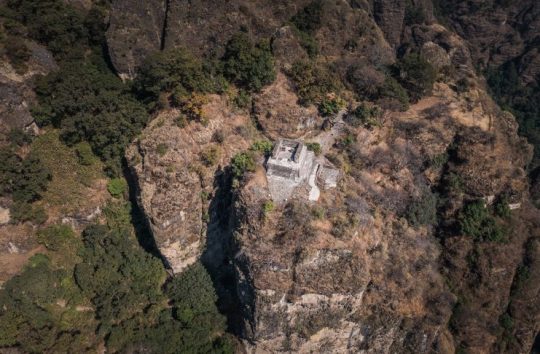
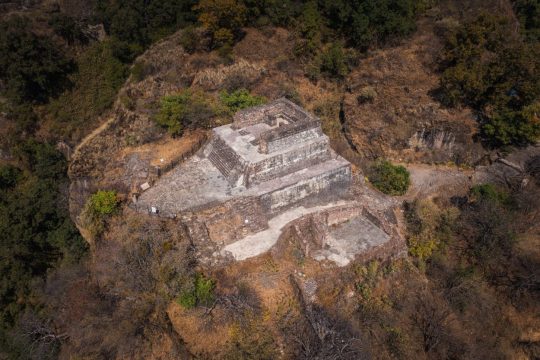
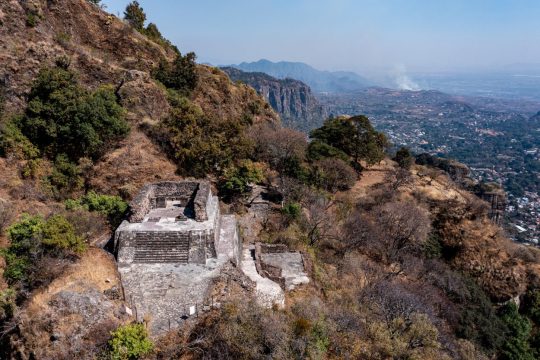
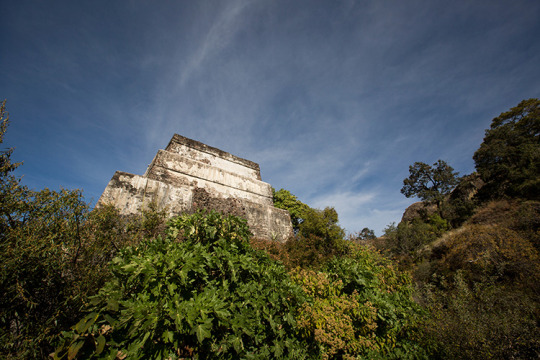
El Tepozteco – The Temple of the Drunken Aztec Rabbit
El Tepozteco is a remote Aztec temple, built on one of the peaks of the Sierra de Tepoztlan in Morelos, Mexico.
The temple is dedicated to Ometochtli-Tepoztēcatl, an Aztec god associated with fertility, drunkenness, and the alcoholic beverage pulque. According to Aztec myth, Tepoztēcatl was one of the Centzon Tōtōchtin, a group of divine rabbits who met for frequent drunken parties.
El Tepozteco is situated on a mountain peak at 2,310 metres above sea level (7,579 feet) overlooking Tepoztlán, the birthplace of Ce Acatl, later known as Topiltzin Ce Acatl Quetzalcoatl. The temple emerged as a major cult centre for Tepoztēcatl, attracting pilgrims from across the Aztec world.
The site consists of a 6.4-meter-high platform supporting a 3.3-meter-high temple base. The main temple structure now stands at 2.7 metres and originally contained two rooms where a sculpture of Tepoztecatl was placed for religious ceremonies.
Dwellings were built on a series of terraces on the eastern side of the site in order to house priests and staff for maintaining the temple.
Excavations at El Tepozteco have identified a glyph that mentions the Aztec Emperor Ahuizotl, the eighth Aztec ruler and the Huey Tlatoani of the city of Tenochtitlan. Another glyph mentions the calendrical date “10 rabbit” which represents the year AD 1502, possibly indicating when the temple complex was first constructed or to commemorate the death of Ahuizotl.
Other glyphs include a turquoise crown and a shield with arrows, suggesting that the parts of the temple were built during the period of the Triple Alliance (an alliance between the Nahua altepetl city-states: Mexico-Tenochtitlan, Tetzcoco, and Tlacopan) sometime after AD 1452, the year when the Alliance conquered Tepoztlan.
El Tepozteco was abandoned sometime during the Spanish conquest (AD 1519–21), most likely when Tepoztlán was attacked and burnt to the ground by soldiers under the command of Hernán Cortés.
#El Tepozteco – The Temple of the Drunken Aztec Rabbit#archeology#archeolgst#history#history news#ancient history#ancient culture#ancient civilizations#aztec#aztec culture#aztec history#aztec temple#aztec warrior#hernán cortés#morelos mexico#Sierra de Tepoztlan
79 notes
·
View notes
Text
Cold winter: Tezcatlipoca
TEZCATLIPOCA
Category: Aztec mythology
Tezcatlipoca is one of the main gods of the Aztec pantheon, and one of the four deities known collectively as the “Tezcatlipocas” (Tezcatlipoca proper being the Black Tezcatlipoca, ruler of the North). He was also known by several other names such as Titlacauan (We are his slaves), Ipalnemoani (He by whom we live), Ome Acatl (Two reed), Yohualli Ehecalt (Night wind), Necoc Yaotl (Enemy of both sides), Tloque Nahuaque (Lord of the near and the night), or Ilhuicahua Tlalticpaque (Possessor of the sky and earth). As you can tell by these various titles, he was a pretty ominous guy.
I) Attributes
As his title indicates, Tezcatlipoca was renowned for being a god associated with the color black, either with his body being black, or by having black lines of paint over his face (alongside yellow lines). He typically was depicted wearing a loincloth, knotted sandals, armbands, and a headdress made of heron feathers (with sometimes tinker bells around his ankles or neck). Tezcatlipoca is also usually seen holding several different items: arrows, a spear, a fan of feathers surrounding a mirror, or a shield with on it a ball of either feather or cotton.
One of the key features of Tezcatlipoca is that he only has one full leg, his right foot rather being replaced by either a snake, a bone, or an obsidian mirror. Interestingly, sometimes the obsidian mirror wasn’t replacing his missing feet, but rather attached to his chest, with smoke rising from it. Other depictions (and interpretations of this depiction) keep the idea of a disc strapped to the god’s chest, but lean more towards some sort of talisman carved out of abalone shell. But the idea of a smoking obsidian mirror is very interesting because Tezcatlipoca’s very name means… “smoking mirror”. And the reason his mirror is always obsidian, beyond the fact that obsidian was Tezcatlipoca’s sacred material, is… simply because Aztec mirrors were made of obsidian. That’s it. BUT mirrors in the Aztec society weren’t just every day item, they were rather used for specific prophetic rituals. Which is why, through his mirror, Tezcatlipoca is both the god of obsidian and the god of divination.
In fact the full list of Tezcatlipoca’s domain is actually pretty long, ranging from neutral things (rulership, sorcery, divination, north) to natural elements (obsidian, the night sky, night winds, the earth) – but most of his attributes were actually negative or downright evil. He was the god of hostility and discord, the patron of temptation and conflict, as well as the deity of the hurricanes. His only positive traits being that he was also a god of beauty, and a god of war. (Note: For the Aztecs, war is life. Literally. They had a mentality similar to the Norse where war was a beautiful, honorable thing on which their society relied and that they hoped to die in to get into paradise) Tezcatlipoca’s duality is well manifested in the various songs and prayers to him that honor the deity as “the Giver of Life”, “a poet and a scribe” – but more importantly as “the creator and the destroyer of the world”.
As with all the Aztec gods, Tezcatlipoca had a totem animal, and his was the jaguar. In fact, the jaguar deity known as Tepeyollotl was simply interpreted as being Tezcatlipoca when he manifested in his “jaguar aspect”.
II) Myths
Tezcatlipoca was thought to be one of the four sons of the primordial divine couple, Ometecuhtli and Omecihuatl, alongside the other three “Tezcatlipocas”: Xipe Totec, the Red Tezcatlipoca, Huitzilopochtli the Blue Tezcatlipoca, and Quetzalcoatl the White Tezcatlipoca. And the latter was known in texts as the regular enemy of Tezcatlipoca: the Black and the White god were renowned as bitter rivals constantly fighting with each other.
There are two main legends concerning Tezcatlipoca, both being creation-myths retelling the origins of the world.
The first is the legend of Cipactli. According to this legend, before the world was created it was only a vast sea inhabited by a monstrous entity known as Cipactli. Quetzalcoatl and Tezcatlipoca teamed up to create a world, but they could not do it as long as the destructive sea monster was there, so the gods planned to get rid of her. Tezcatlipoca plunged his right foot into the sea, for Cipactli was known to be eternally hungry – and the creature took the bait by eating the god’s foot, but this led to her capture. The two gods then distorted and reshaped the monster’s body so that it would become the land and continents we know today, before creating humanity to populate their new world. And ever since this day Tezcatlipoca is a one-foot god, while humanity brings offering to Cipactli – for while distorted, reshaped and immobilized, the monster is still alive and in pain, and when it groans or shakes it causes earthquakes humans must appease with food, to satiate her eternal hunger.
The second myth is much more well-known and famous: it is the Five Suns myth. According to this legend, there were five different world that existed one after another – each called a “Sun”, because the lifespan of a world was tied to the one of its sun. According to some traditions, when a god created a world he became the “Sun” of it – but other versions of the myth rather claim that each world was created collectively by all the gods, before they chose one specific deity to become its sun and bring light to it. All in all we know that Tezcatlipoca was the first sun of the first world, where men were renowned for their gigantic heights – but as it turns out he was a bad sun. Some say it was because he was a god of night and darkness, others say it was because he missed a foot, but overall he produced a dim, half-light and was a very poor sun, so Quetzalcoatl, unsatisfied with his brother’s job, knocked him out of the sky with a stone club. It created an endless night, and Tezcatlipoca was so enraged at being fired from his job that he ordered all of the jaguars in the world to devour humanity (or he himself turned into a gigantic jaguar to destroy the world in a fit of rage) – and so the first world ended.
Afterward Tezcatlipoca ended up playing a role in each of the future suns demises, probably jealous and bitter at the whole “first sun” ordeal. When Quetzalcoatl became the second sun, he loved too much his humans and pampered them, leading them to become uncivilized, bestial and unreligious. Tezcatlipoca, acting as a force of “authority and judgement” quickly stepped in to settle the matter. Some versions say he used his sorcery to turn all the humans into monkeys, and Quetzalcoatl, angry, send a huge wind to wipe off the surface of the earth and end his world ; others claim that rather Tezcatlipoca forced Quetzalcoatl to create a huge hurricane to destroy his world, while the few surviving humans naturally devolved into monkeys. When Tlaloc, the god of rain, became the third sun, Tezcatlipoca used a sly plan – he seduced and stole away Tlaloc’s wife, the goddess Xochiquetzal, and out of grief Tlaloc stopped all rain. As humanity begged him constantly to make it rain, he grew angry and in an outburst of rage caused a rain of fire that burned all of the world away – the few surviving humans becoming birds. When a fourth world was created out of the third’s ashes, Chalchihuitlicue the goddess of water became its sun – but Tezcatlipoca accused her of putting the façade of a loving goddess in front of her “true” selfishness, to be an hypocrite faking kindness merely to be praised by humanity. These harsh accusations hurt the actually very kind goddess, who cried blood for many years, her tears causing an enormous flood that destroyed the fourth world, with the few remaining survivors becoming fishes.
The only world/sun Tezcatlipoca hasn’t touched or destroyed yet is the Fifth, the one we live in today, the sun of the god Huitzilopochtli. Or at least… he hasn’t tried yet.
III) Worship
The festival of Tezcatlipoca was called Toxcatl, and held in what we know today as the month of May. Each Toxcatl festival a young man was selected to become an ixiptlatli (an “impersonator” that is to say a form of actor embodying and representing a god for ritual purpose) – usually a war prisoner and a warrior (though sometimes slaves were bought, even though they had to be bathed by priests to be free of impurities). Throughout the year the Tezcatlipoca-impersonator would parade in the streets of Tenochtitlan (Aztec empire capital) in a Tezcatlipoca outfit (skin painted black, precious jewelry, embroidered cotton clothes, snail-shell lip pendant, headdress of eagle feathers, bracelets of turquoise and golden bells at his ankles) and be treated with outmost reverence as if he was the god himself. He was taught courtly speech, the art of singing, and how to play a flute, because his activities were to play the flute, smoke tobacco, burn copal incense and smell flowers everywhere he went. The impersonator would regularly be adorned by the Aztec emperor himself, and in the month previous to the next Toxcalt the impersonator would be wed to four maidens embodying four different goddesses (Xochiquetzal, Xilonen, Huixtocihuatl and Atlatonan). He lived with them for twenty whole days, and it should be noted that before this wedding the impersonator was to follow a strict rule of abstinence.
The week before the next Toxcalt the fake-Tezcatlipoca spent his days singing, dancing and feasting as merrily as he could, and four days before the next Toxcalt he would parade with his wife through the streets. On the next Toxcalt the group would travel by a small boat to a sacred island, where the fake Tezcatlipoca would leave his wives at a temple before climbing the stair of a pyramid – breaking a flute with each step. At the top of the pyramid, he was laid on a sacrificial stone and there ritualistically killed: his chest opened with an obsidian dagger to remove his heart, his head cut off so that his skull could be displayed, his body flayed, and finally his flesh given to eat to the nobles of the city. Then, a part of the god’s flesh was given to another young male war-captive, who also wore the skin of the impersonator, and thus he was to become the next ixiptlatli of Tezcatlipoca for a whole new year.
This festival was a BIG thing in the Aztec empire: all throughout it people prepared offerings of food and flowers for the gods, and many dances were performed that involved lot of “kissing and playing between men and women”: men danced the “dance of the snake”, women danced “the dance of the grilled corn”, and when presenting offerings people did “the leap of Toxcatl”. We also known that after these dances, participants to the festival were usually to receive ritualistic scars by the priests of Tezcatlipoca.
This whole sacrificial festival was seen as something of outmost importance for the nobility because Tezcatlipoca was seen as the patron deity of the royal house, and so each Aztec ruler had to be very faithful to him, with numerous hymns having the emperor comparing himself to a “blind, deaf imbecile” or an “excrement” in front of the “lord of the night and the wind who is our master”, and other texts identifying Aztec rulers as mere vessels expressing the god’s will and speaking with the god’s voice. Similarly, the Tezcatlipoca impersonator was always described as climbing the sacrificial staircase with “dignity and pride” because being killed in this ritual was seen as a great honor. The entire ceremony has been interpreted in numerous ways by scholars, with unsure and conflicting theories – the most common being that this ritual was a form of renewal ritual that could mean the chance of seasons or the cycle of deaths and rebirths ; others reject the idea that the festival was held in May and rather see it as a fall festival for the harvest celebration ; some argue it was simply a grandiose sacrifice offered by the Aztec ruler to the very god of rulership to maintain his power to dominate the empire ; and people have pointed out a possible interpretation of the “twenty days of sexuality culminating in a sacrifice” after one year of abstinence symbolized a period of fertility at the end of a drought.
- - - - -
Another genealogy I haven’t talked about claims that the four Tezcatlipocas were born out of another primordial Aztec goddess, Coatlicue (you might know her as the two-snakes-headed lady) – in the myth Quetzalcoatl was her firstborn, alongside his twin Xolotl, born of the goddess as she was still a virgin ; Tezcatlipoca only being born second, fathered by… an obsidian knife. Then following the Tzitzmitil, the gods of the stars, and finally Huitzilopochtli, the god of the sun, born out of a… ball of feathers. Similarly the creation myths I detailed above have several variants : for example, while some claim in the Cipactli legend that only Quetzalcoatl and Tezcatlipoca did the “creating the world” business, others talk of them as merely being responsible for the “fishing” of the primordial sea-monster, and binding it outside of the water, while the whole “reshaping her body into the land” was done by their brothers, Xipe Totec and Huitzilopochtli. A third yet claims that Tezcatlipoca did the whole “capturing Cipactli” alone, and that it was him who alone dismembered the hungry water creature to create the land (hence his title as god of the earth).
A small note for a deity connected to Tezcatlipoca: Tepeyollotl, an Aztec god whose name means “heart of the mountains” or “mountain-heart”. He was the god of the “eighth hour of the night”, usually depicted as a jaguar leaping towards the sun or as a jaguar-skin-wearing man with crossed eyes and a white staff ornated with green feathers. He was a spirit of dark caves, echoes and earthquakes and… despite the two being identified as different deities, he also seems to have been Tezcatlipoca. Several texts imply that Tepeyollotl was the identity Tezcatlipoca took when he put on the skin of a jaguar or turned into a jaguar, thus this being his “jaguar counterpart” (or his *cough cough* furry persona *cough cough). Other rather point out that Tepeyollotl might have been intended to be a fake identity or disguise in-universe, that Tezcatlipoca used to trick and deceive other people.
12 notes
·
View notes
Conversation
Acatl: Teomitl messed up, he did. But blowing your top off at him isn’t going to help anything.
Mihmatini: You don’t know, Acatl, it might.
3 notes
·
View notes
Text
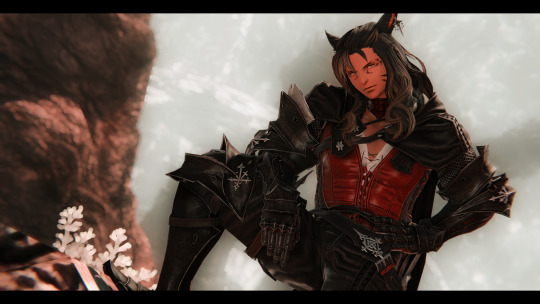
la pistola y el corazón
#final fantasy xiv#final fantasy 14#ffxiv#ff14#GPOSE#miqo'te#seeker of the sun#original character#oc#friend oc: acatl#cw spoiler#i guess? idk everyone's seen the fit in promos but im gonna tag just in case#anyway miqohusband im extremely normal about him
2 notes
·
View notes
Note
sending you josephine and chakotay :)
Josephine
First impression: She is very sweet, definitely a princess archetype! I was intrigued by her, as I often am by characters who are far from home in a story, and embodying a sense of 'foreignness'. For all the ways it shades her interpretation by fandom, it interests me personally as a foreigner. Also I was looking forward to hearing about nobility in Antiva. I'd still like to hear more about it lol.
Impression now: She's a very interesting character politically, I love that she has come to such a confident place through hard work and self assurance. :) The impression is the same, just more nuanced.
Favorite moment: The spin after the inquisitor's duel, in a romanced Josie playthrough. Soooo sweet. ;-; <3
Idea for a story: I am desperately thinking of ways to work her into QDT but I'm not sure if I can succeed. More likely I'd write about her navigating the fallout of the Crows' dissolution (which takes place across several decades in my headcanon/worldstate).
Unpopular opinion: It's been a while since I've played DAI but I do not have many Josie opinions!
Favorite relationship: Josephine/Adaar just gets me because of that height difference, ngl. I look forward to romancing her with Neluayo to see what their dynamic is <3
Favorite headcanon: I do think she and Zevran would get along!
Chakotay
First impression: I loved the setup of how the Maquis came to be on Voyager, and how the two crews would have to work together long-term. Funny enough, I actually watched Voyager out of order; used to catch episodes on television here and there, so I had an idea of what his character was like when I started watching Voyager in earnest. But I was intrigued by how he would grow; as the leader of the Maquis crew, his character promised interesting character development.
Impression now: I think he has so much potential but I hate how poorly handled his indigenous identity was. From ancient aliens to spirit animals and other anti-indigenous stereotypes, a lot of these things should have been avoided in his writing. :( I STILL LOVE HIM THOUGH I WANT TO KNOW WHAT HE'S DOING IN PRODIGY
Favorite moment: The flashback scenes in Prodigy where he's captaining the Protostar. :/
Idea for a story: Since Paramount doesn't want to write it!! :/ I'll write the next season in Prodigy where they get Chakotay back and he and Janeway have an emotional reunion.
Unpopular opinion: I do not like his fake-ass 'native' tattoo. :( I tend to ignore it.
Favorite relationship: Janeway/Chakotay <3
Favorite headcanon: This is more or less canon, but not explicitly confirmed due to the terrible writing in regards to his background; he mentions in one episode that he has an ancestor named Ce Acatl, so he is definitely Mexican.
3 notes
·
View notes
Photo

Ce Acatl Topiltzin Quetzalcoatl.
7 notes
·
View notes